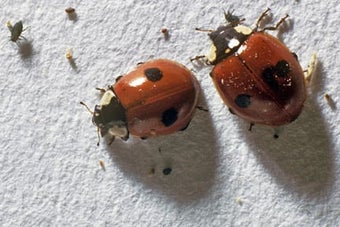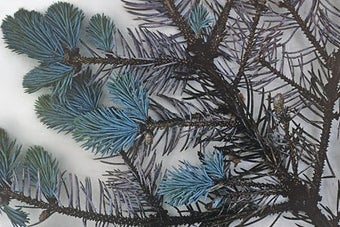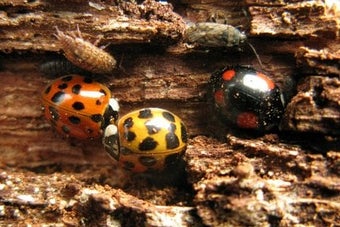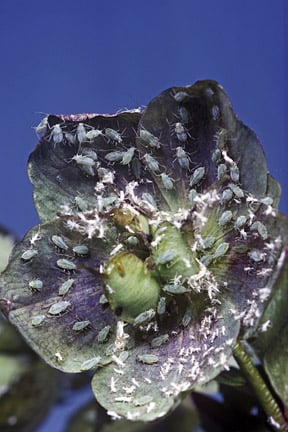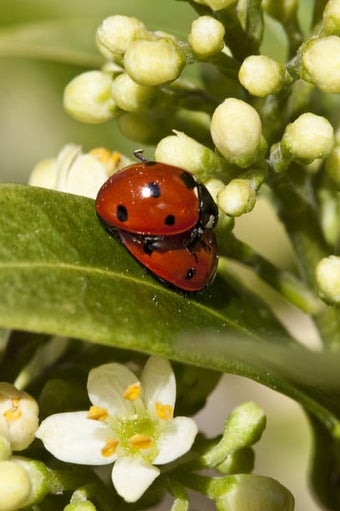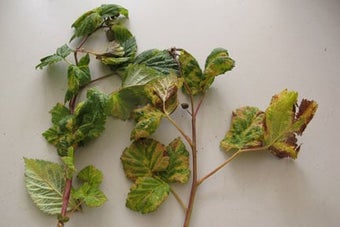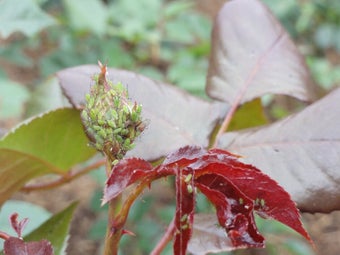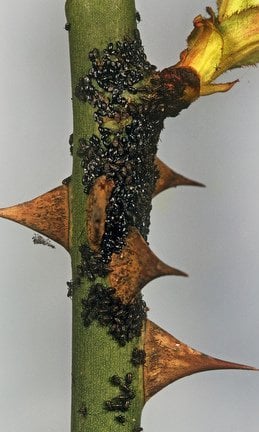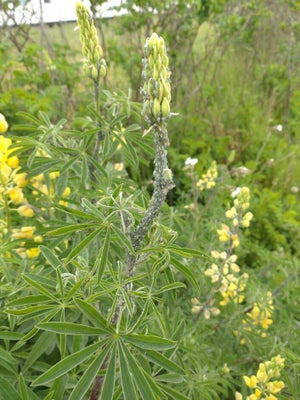
Quick facts
Common name - Lupin aphid
Scientific name - Macrosiphum albifrons
Plants affected - Annual and perennial lupins
Main symptoms - Greyish white aphids on the foliage and flowers
Caused by - A sap-sucking insect
Timing - April-September
What is lupin aphid?
Aphids are -sucking true bugs. They range in size from 1 to 7 mm (¼ in or less) long. Some aphids are known as greenfly or blackfly, but there are species that are yellow, pink, white or mottled. There are more than 500 aphid species in Britain. Some feed on only one or two plant species, but others can be found on a wide range of plant hosts. Many have lifecycles that involve more than one host plant. Almost any plant can be a host to aphids, including ornamentals, vegetables, fruits, greenhouse plants and houseplants. More information on aphids .
Lupin aphid feeds on lupins (Lupinus). to North American it has become widespread in Britain since its arrival in the early 1980s.
Symptoms
- Large, greyish-white aphids, up to 4 mm long, form dense colonies on the underside of leaves and on the flower spikes
- Sticky foliage covered with honeydew excreted by the aphids
- Heavily affected plants often wilt

Management
Aphids form the basis of many food chains and it is not unusual to have some of these animals in a healthy balanced garden ecosystem. Unfortunately lupin aphid is unusual for an aphid as it often causes host plants to wilt. On established lupins aphids can be considered part of the they support and should not cause long term harm to the plants, although alarming natural enemies will normally reduce numbers during late spring and into summer.
- Where possible tolerate populations of aphids
- Check lupins frequently from spring onwards so action can be taken before a damaging population has developed
- Use finger and thumb to squash aphid colonies where practical
- Encourage aphid predators in the garden, such as ladybirds , ground beetles , hoverflies, parasitoid wasps and earwigs . Be aware that in spring aphid populations often build up before natural enemies are active in sufficient numbers and then give good control
Biology
Lupin aphid is present on its host plants all year round.
Small numbers of aphids overwinter on the basal and they begin to reproduce in spring. For most of spring and summer the aphids are in the form of wingless females that give birth to live young. Aphid numbers generally peak when the plants are coming into flower.
When the aphids colonies become overcrowded in mid-summer, winged forms develop that can fly and colonise other lupins.


